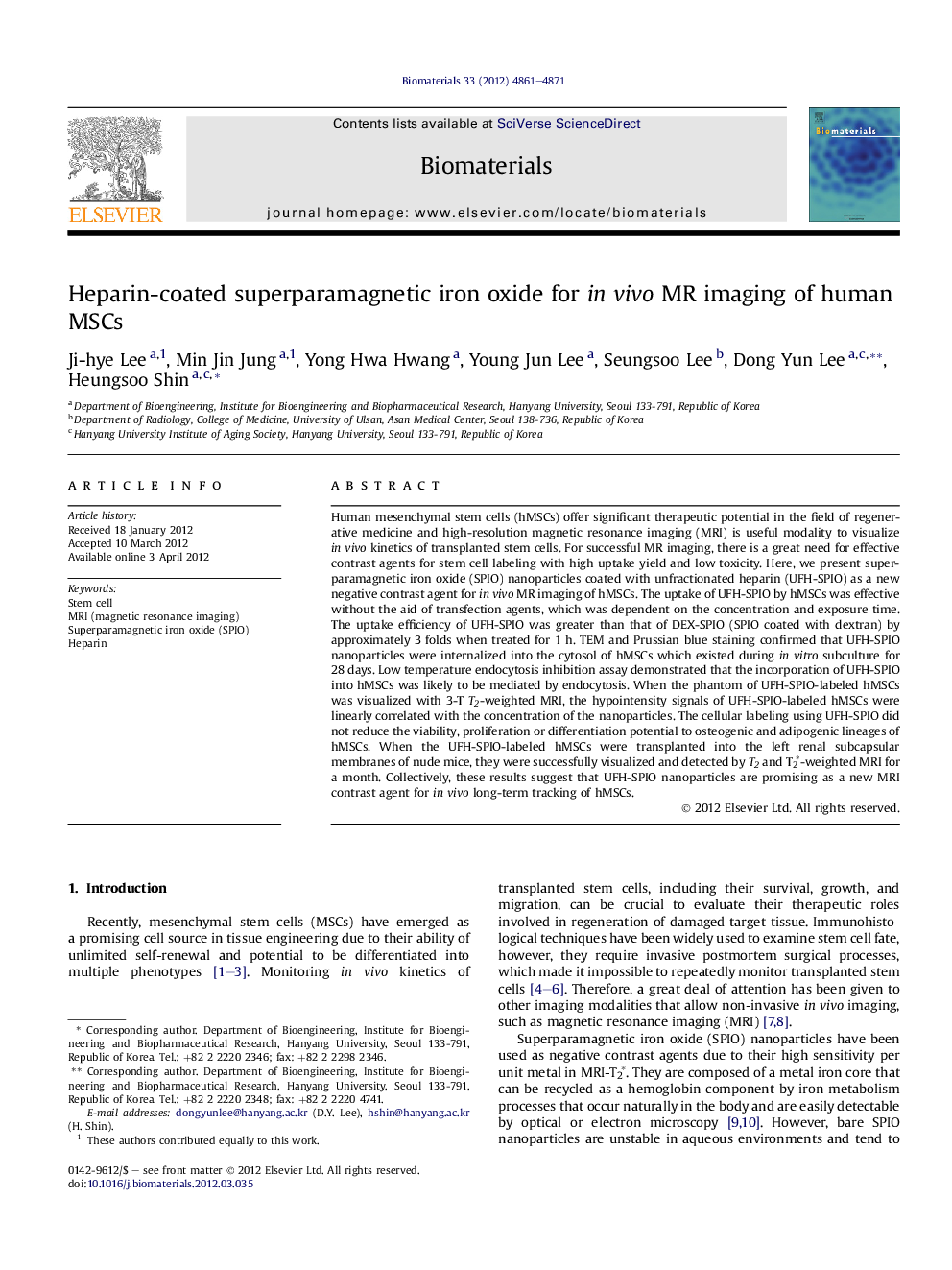| کد مقاله | کد نشریه | سال انتشار | مقاله انگلیسی | نسخه تمام متن |
|---|---|---|---|---|
| 7277 | 543 | 2012 | 11 صفحه PDF | دانلود رایگان |

Human mesenchymal stem cells (hMSCs) offer significant therapeutic potential in the field of regenerative medicine and high-resolution magnetic resonance imaging (MRI) is useful modality to visualize in vivo kinetics of transplanted stem cells. For successful MR imaging, there is a great need for effective contrast agents for stem cell labeling with high uptake yield and low toxicity. Here, we present superparamagnetic iron oxide (SPIO) nanoparticles coated with unfractionated heparin (UFH-SPIO) as a new negative contrast agent for in vivo MR imaging of hMSCs. The uptake of UFH-SPIO by hMSCs was effective without the aid of transfection agents, which was dependent on the concentration and exposure time. The uptake efficiency of UFH-SPIO was greater than that of DEX-SPIO (SPIO coated with dextran) by approximately 3 folds when treated for 1 h. TEM and Prussian blue staining confirmed that UFH-SPIO nanoparticles were internalized into the cytosol of hMSCs which existed during in vitro subculture for 28 days. Low temperature endocytosis inhibition assay demonstrated that the incorporation of UFH-SPIO into hMSCs was likely to be mediated by endocytosis. When the phantom of UFH-SPIO-labeled hMSCs was visualized with 3-T T2-weighted MRI, the hypointensity signals of UFH-SPIO-labeled hMSCs were linearly correlated with the concentration of the nanoparticles. The cellular labeling using UFH-SPIO did not reduce the viability, proliferation or differentiation potential to osteogenic and adipogenic lineages of hMSCs. When the UFH-SPIO-labeled hMSCs were transplanted into the left renal subcapsular membranes of nude mice, they were successfully visualized and detected by T2 and T2∗-weighted MRI for a month. Collectively, these results suggest that UFH-SPIO nanoparticles are promising as a new MRI contrast agent for in vivo long-term tracking of hMSCs.
Journal: Biomaterials - Volume 33, Issue 19, June 2012, Pages 4861–4871